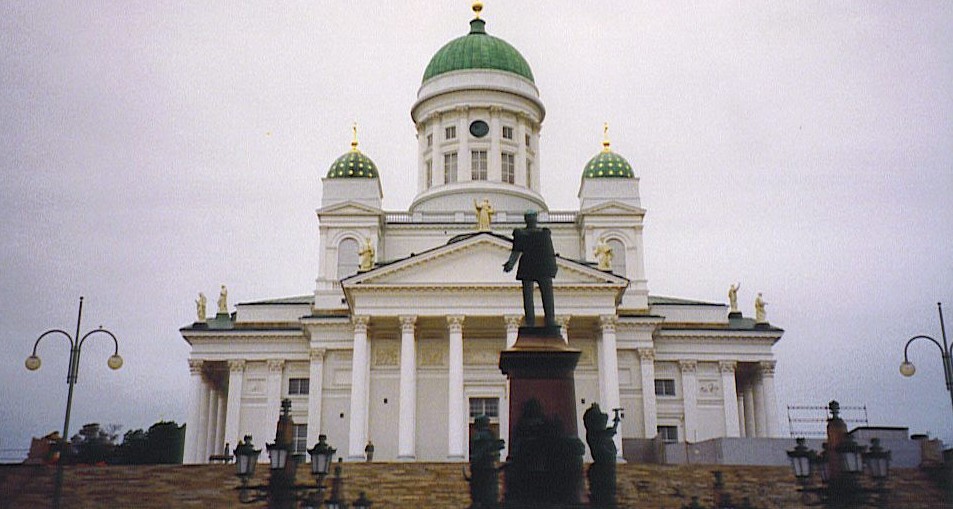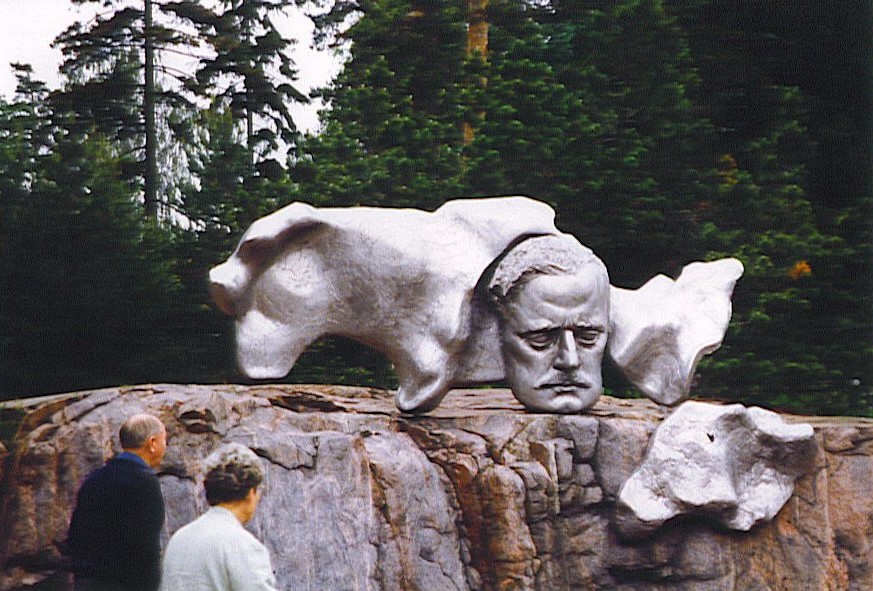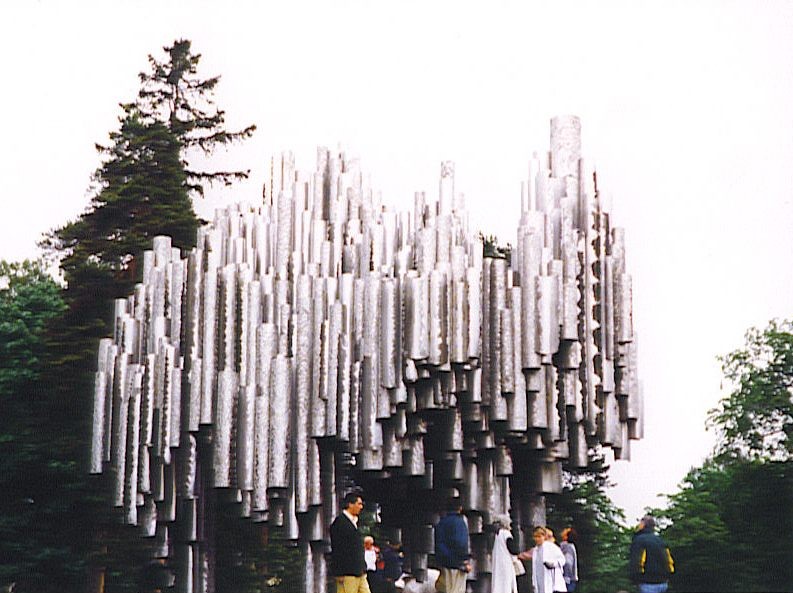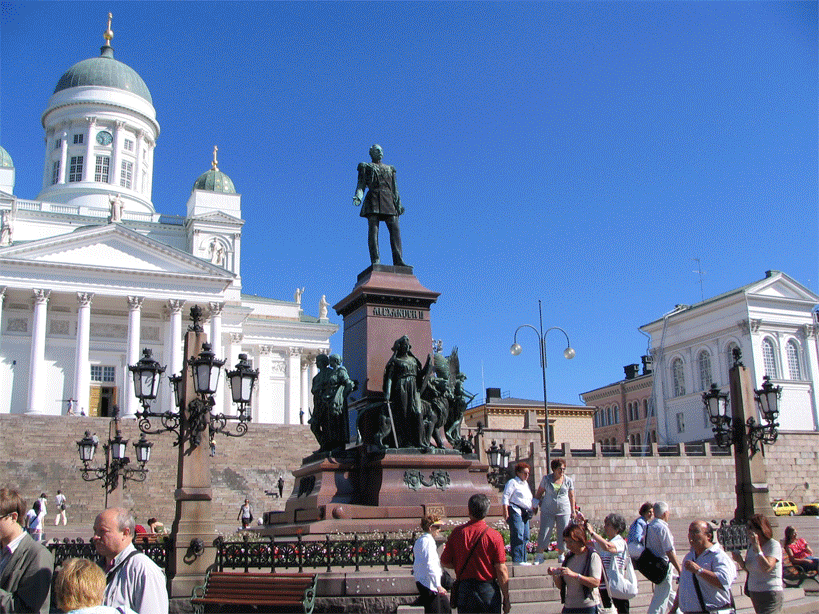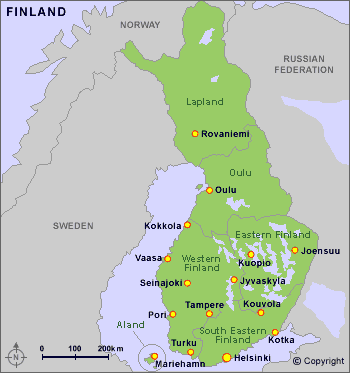 |
Indigenous
Sami (formerly known as Lapps, a term they find offensive)
once inhabited most of Finland. They were pushed into the far northern
part of the country thousands of years ago by migrants from
northeastern Europe. In the 12th century, Finland (then a pagan
country) was incorporated into Sweden following a Swedish crusade, and
a bishop named Henrik from the British Isles was left in Turku to
administer the country (and eventually to suffer a martyr's death - the
pagan who decapitated him didn't feel he needed a new set of rules).
Henrik was later canonized and became Finland's patron saint. Sweden
and Russia began fighting over the country in 1710, and each owned
pieces of it until Russia prevailed in 1809. In 1906, Finland
negotiated with the Russians for a parliament of its
own. The new parliament promptly recognized women's right to vote - the
first government in Europe to do so. In 1917, Finland declared
independence and, two years later, established a republic in the wake
of the Russian Revolution. Finns are particularly proud of their
staunch resistance in the Winter War against the Soviet Union in
1939-1940, when the tiny nation held the massive Red Army at bay for
many months. Finland won nearly every battle but in the end was
overwhelmed by the sheer number of Soviet troops. Finland lost portions
of its territory. Following World War II, Finland established a
lucrative relationship with the Soviet Union, with the Soviets
bartering oil and natural gas for Finnish goods. While the barter
system greatly benefited the Finns, it also allowed the country to
become somewhat complacent, and many Finnish industries failed to keep
pace with the rest of Europe. Following the breakup of the Soviet Union
in the early 1990s, Finland's economy took a nosedive, from which the
country has mostly recovered. In 1995, Finland became a member of the
European Union.
(Monica Kochman - National Geographic Magazine) |


|



